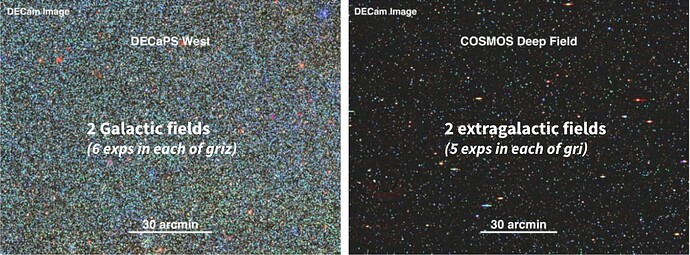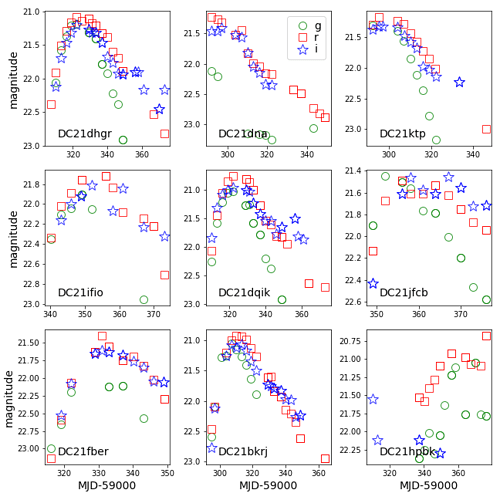Abstract: When Rubin Observatory begins operations, time-domain data on transients and variables will come from both the Legacy Survey of Space and Time’s (LSST) wide-fast-deep (WFD) main survey and its deep drilling fields (DDF). The Zwicky Transient Facility (ZTF) currently produces WFD-like alerts; in order to enrich the alert ecosystem we survey four DDFs with the Dark Energy Camera (DECam) and perform real-time alert distribution.
All of the data from this program is public and available for anyone to use. Please contact @MelissaGraham for an advanced copy of the survey characterization paper, with any questions about how to access the data, or if you’d like to join the team and contribute to the proposal and observing at CTIO.
Graham et al. (2022, MNRAS, submitted) co-authors:
Robert A. Knop, Thomas Kennedy, Peter E. Nugent, Eric Bellm, Márcio Catelan, Avi Patel, Hayden Smotherman, Monika Soraisam, Steven Stetzler, Autumn Awbrey, Karina Baeza-Villagra, Pedro H. Bernardinelli, Federica Bianco, Dillon Brout, Riley Clarke, William I. Clarkson, Thomas Collett, James R. A. Davenport, Shenming Fu, John E. Gizis, Ari Heinze, Lei Hu, Saurabh W. Jha, Mario Jurić, J. Bryce Kalmbach, Alex Kim, Chien-Hsiu Lee, Chris Lidman, Mark Magee, Clara E. Martínez-Vázquez, Thomas Matheson, Gautham Narayan, Antonella Palmese, Christopher A. Phillips, Markus Rabus, Armin Rest, Nicolás Rodríguez-Segovia, Rachel Street, A. Katherina Vivas, Lifan Wang, Nicholas Wolf, and Jiawen Yang
Deep Drilling Fields
Two Galactic (high stellar density) fields from the DECam Plane Survey (DECaPS), which we call DECaPS-East (18h,-29d) and DECaPS-West (07h,-26d). Two extragalactic fields covered by the Dark Energy Survey (DES), COSMOS (10h,2d) and ELAIS (0h-43d). Single-image limiting magnitudes ~23.5 mag; nightly depth ~24.5 mag.
Publicly Available Data
The proprietary period is waived. All images are available in the NOIRLab archive under proposal identifiers 2021A-0113, 2021B-0149, 2022A-724693, and 2022B-762878 (P.I. M. L. Graham). Alerts for all sources detected in difference images are distributed to brokers. Lightcurves for 4413 high-quality candidates – including individual difference-image and nightly-epoch photometry – are available in the Version 2 release of the decam_ddf_tools repository.
Science Demonstration: Supernova Lightcurves
The main technical goals of this DDF program are to enrich the alert ecosystem and provide DDF-like training sets for photometric classification. The main science goals are to study faint and fast variables and transients (Galactic and extragalactic), and main-belt asteroids and trans-Neptunian objects in the Solar System. The figure below is an example of just nine random SN-like lightcurves of many that were identified from the “4413 high-quality publicly-available candidates” mentioned above.

